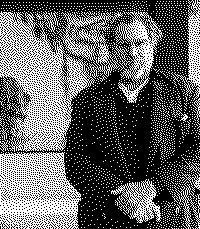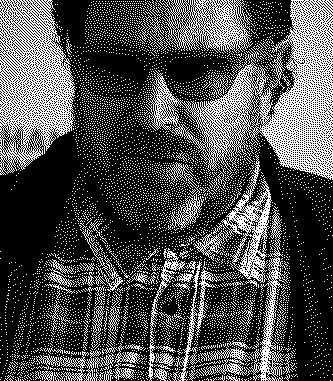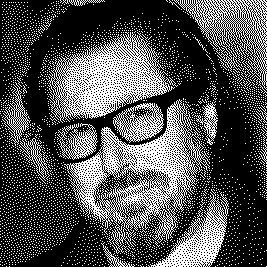Artists/Julian Schanbel
Fast Facts
Plate Paintings
Julian Schnabel is widely recognized for his "plate paintings" that emerged in the late 1970s. These large-scale works are characterized by their use of broken ceramic plates and other found materials affixed to wooden panels, creating a rich, textured surface that breaks away from traditional painting techniques. This approach not only challenged the norms of painting but also introduced a new form of expression that merged painting with sculpture, emphasizing the physicality and materiality of art.
Neo-Expressionist Movement
Schnabel played a pivotal role in the Neo-Expressionist movement, a resurgence of painterly, expressive techniques in the 1980s that stood in contrast to the minimalism and conceptual art that dominated the 1970s. His work, known for its bold, emotional, and sometimes controversial imagery, reintroduced human figures, narrative elements, and personal symbolism into contemporary art, making him a leading figure in this movement.
Multidisciplinary Approach
Beyond painting, Schnabel's oeuvre spans a wide range of mediums, including sculpture, photography, and film. His foray into filmmaking has been particularly successful, with films like "Basquiat" (1996), "Before Night Falls" (2000), and "The Diving Bell and the Butterfly" (2007), showcasing his talent in translating his visual and narrative sensibility into the cinematic realm. This multidisciplinary approach highlights Schnabel's versatility and his desire to explore different forms of creative expression.
Personal and Historical Themes
Schnabel's art is deeply personal, often drawing from his own life experiences, as well as historical, cultural, and literary references. His works are imbued with a sense of autobiography and introspection, while also engaging with broader themes of death, redemption, and the human condition. This blending of the personal with the universal allows his art to resonate on multiple levels with viewers.
International Recognition
Julian Schnabel has achieved international acclaim for his contributions to art and film. His work has been exhibited in major museums and galleries around the world, and he has received numerous awards for his artistic and directorial efforts. Schnabel's influence is notable not just in the realm of visual art but also in cinema, where his distinctive visual style and narrative depth have garnered critical and commercial success.
Biography



Julian Schnabel, born on October 26, 1951, in Brooklyn, New York, is a multifaceted artist and filmmaker whose work has left a significant mark on both the art and cinema worlds. Growing up, Schnabel developed an interest in Mexican culture and Catholic imagery, which would later influence his art.
His family moved to Brownsville, Texas, when he was thirteen, a place that further fueled his creative aspirations. Schnabel pursued his passion for art, earning a BA in Fine Arts from the University of Houston in 1973 before moving to New York to attend the Independent Study Program at the Whitney Museum. His career took off in the late 1970s and early 1980s, marking him as a pivotal figure in the Neo-Expressionist movement (The Art Story) (Julian Schnabel).
Schnabel's art is known for its bold use of materials and scale, often incorporating broken plates, antlers, and unconventional surfaces into his paintings, which combine abstract and figurative elements. His work has been critiqued for both its audacious style and its departure from minimalist traditions. Notable pieces include "The Student of Prague" and "Spain," which highlight his signature "plate paintings" technique, using broken ceramics to create textured, emotive surfaces (Wikipedia) (The Art Story).
Venturing into filmmaking in the 1990s, Schnabel gained acclaim for his biographical films, including "Basquiat" (1996), "Before Night Falls" (2000), and "The Diving Bell and the Butterfly" (2007), the latter earning him multiple awards and nominations for its direction. His filmography also includes "Miral" (2010) and "At Eternity's Gate" (2018), demonstrating his ability to bring complex emotional narratives to the screen (Wikipedia).
Throughout his career, Schnabel has been a polarizing figure, known for his larger-than-life persona and statements. He published his autobiography, "CVJ: Nicknames of Maitre D's & Other Excerpts From Life," in 1987, and even ventured into music, releasing the album "Every Silver Lining Has a Cloud" in 1995. His personal life has been as dynamic as his career, with Schnabel marrying multiple times and having children with each of his spouses. He currently lives in New York City with his wife Louise Kugelberg, continuing to work in both art and film (Wikipedia).
His exhibitions and retrospectives have been hosted by prestigious institutions worldwide, including a significant exhibition at the Art Gallery of Ontario in 2010 and a survey show at Museo Correr in 2011. Schnabel has consistently pushed the boundaries of both painting and filmmaking, exploring the interplay between the two mediums and how one informs the other (Wikipedia) (Julian Schnabel).
Julian Schnabel's contributions to art and film are characterized by his willingness to explore and experiment, making him a prominent figure whose work continues to provoke and inspire.
Importance
Pioneer of Neo-Expressionism
Schnabel emerged in the late 1970s as part of a global wave of artists who revitalized painting with a bold, expressive style known as Neo-Expressionism. He gained immediate acclaim in the art world, leveraging diverse materials such as plaster, broken crockery, and velvet, blending fine art with popular culture to challenge traditional notions of authorial originality and intent (Encyclopedia Britannica).
Innovator of Material and Scale
Known for his "plate paintings," Schnabel's work is characterized by the use of large-scale canvases and unconventional materials, including broken ceramic plates. This approach not only distinguished his artwork visually but also conceptually, as it signified a defiance against the minimalist tendencies prevailing at the time. His art often combines abstract and figurative elements, imparting sculptural properties due to their size, weight, and depth (Wikipedia).
Influential Filmmaker
Transitioning to filmmaking in the 1990s, Schnabel directed several acclaimed films, including "Basquiat" (1996), "Before Night Falls" (2000), and "The Diving Bell and the Butterfly" (2007). His direction in "The Diving Bell and the Butterfly" was particularly lauded, earning him Best Director awards at Cannes Film Festival and the Golden Globes, along with an Academy Award nomination. His films are celebrated for their artistic sensibility, deeply influenced by his painting background (Wikipedia).
Blurring the Lines Between Painting and Cinema
Schnabel's work has consistently explored the interplay between painting and film, with his paintings engaging in a dialogue with cinematic themes and his films reflecting his sensibility as a painter. This cross-pollination enriches both his visual and cinematic output, making him a unique figure who transcends the boundaries between art forms (Art Gallery of Ontario).
Commercial Success and Cultural Influence
Even beyond the art circles, Schnabel made his mark by painting the album cover for the Red Hot Chili Peppers' "By the Way," showcasing his influence in popular culture. His commercial success and participation in major exhibitions, such as those at the Tate Gallery, Whitney Museum, and Centre Pompidou, underscore his importance in contemporary art (Wikipedia).
Technique
Julian Schnabel's art technique is distinct and innovative, encompassing a broad range of materials and styles that have defined his role as a pioneer in the Neo-Expressionist movement. His approach to art-making is characterized by several key techniques and materials:
Plate Paintings
Perhaps the most iconic of Schnabel's techniques is his use of broken ceramic plates. In these works, he applies heavy layers of pigment over the plates, which are glued to wood panels. This method was influenced by the work of Antoni Gaudí and marked a defiant departure from the minimalist aesthetic prevalent at the time. The plates add a unique texture and depth to his paintings, making them stand out both visually and conceptually (The Art Story).
Use of Diverse Materials
Schnabel's creativity extends to the use of a variety of unconventional materials, including plaster, wax, photographs, antlers, velvet, and ceramics. He has painted on surfaces ranging from canvas and wood to muslin and even surfboards. This eclectic mix of materials contributes to the sculptural properties of his works, which often blur the line between painting and sculpture (Wikipedia).
Combination of Abstract and Figurative Elements
His paintings frequently combine abstract and figurative elements, creating a dynamic interplay that challenges traditional categorizations of art. Schnabel's ability to merge these styles speaks to his broader interest in crossing artistic boundaries and exploring the richness of visual language (Wikipedia).
Large Scale
The size of Schnabel's works is another defining feature, with many of his paintings and installations commanding significant space. This grand scale not only impacts the viewer's experience but also reflects Schnabel's ambition to engulf the viewer in an emotional state, emphasizing the intensity and depth of his artistic vision (Wikipedia).
Exploration of Narrative and Symbolism
Beyond his material innovations, Schnabel's work often carries deep narrative and symbolic weight. Whether through the ghost-like figures in his "plate paintings" or the use of text and imagery that suggests broader stories, his art is imbued with layers of meaning that invite interpretation and reflection (The Art Story).








